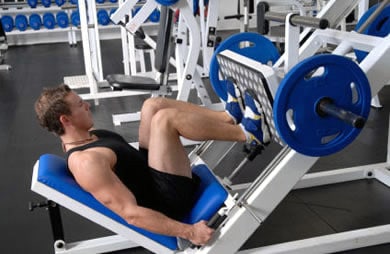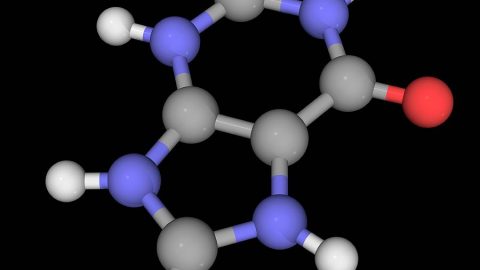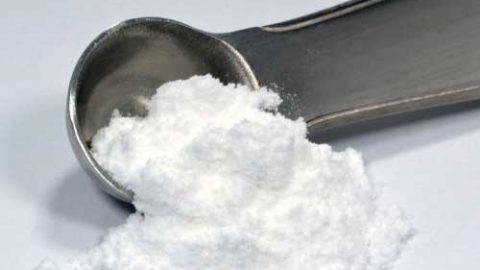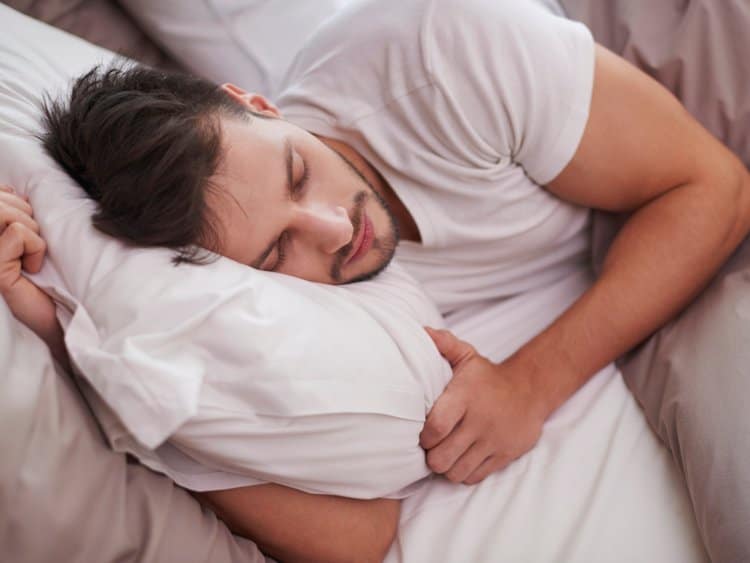GH therapy and possible applications to connective tissue/joint degeneration in active populations.
A common issue for athletes and other active populations (e.g. SWAT, SOF, etc.) is joint and connective tissue pain with various causes and diagnosis such as tendonitis, bursitis, cartilage degeneration, to name a few.
The use of various anti-inflammatory drugs, as well as nutritional supplements (e.g., Glucosamine, fish oils, etc,), and other therapeutic modalities are of value, but are far from a cure at this point.
A topic I have been researching for some time is the use of GH and other growth factors as a possible treatment for joint/connective tissue degeneration.
The causes of joint pain are multi factorial, but in active populations are often training related: over training, lack of proper warm up, loading and exercise choices, and other variables.
That’s the first place people should look when having chronic joint issues, but not everyone has a choice in the matter as to how much exercise they do and or the types of exercise they perform; various athletes, special operations soldiers, SWAT operators, etc.
I have written in prior articles that I think the use of GH and other growth factors (IGF-1, etc) was a promising way to treat connective tissue/joint problems, and studies are starting to support that conclusion.
There have been impressive developments recently in the use of growth factors for accelerated healing of sports related injuries, overuse syndromes, improved healing after some plastic surgery procedures, as well as studies finding success in the area of orthopedics.
More controversial, my hypothesis has also been that many people who suffer from chronic connective tissue problems and chronic back problems are often found to have low IGF-1, and reversing that state of low IGF-1 as a treatment for these pathologies is a viable treatment. It appears the former concept – using growth factors to treat joint pathology – is getting greater attention with the scientific/medical community. The latter concept – that a deficiency in these growth factors may be the cause of their joint related problems – a much more controversial idea.
But hey, I don’t mind being ahead of the curve and waiting for the scientific and medical community to catch up to me! Remember, Growth factors (e.g., IGF-1, bFGF, PDGF, EGF, and others) are the mediators that control the biological processes necessary for repair of soft tissues. After hitting the gym or the road with 60-80lbs of stuff on your back, and having muscles and joints in need of repair from micro trauma caused by those activities – or in the case of traumatic injury to muscles, tendons and ligaments – these growth factors are responsible for healing the injuries, with animal studies showing clear benefits in terms of accelerated healing and repair.
Regarding research on the issue of using growth factors to treat sports related injuries, a recent review in the British Journal of Sports Medicine entitled “Growth Factor Delivery Methods in the Management of Sports Injuries: The State of Play” examined the issue. The review covered a wide range of topics that examined the use of growth factors for treating various sports medicine related injuries. However, the report also noted,
“The use of growth factors in Sports Medicine is restricted under the terms of the WADA* anti-doping code, particularly because of concerns regarding the IGF-1 content of such preparations, and the potential for abuse as performance-enhancing agents.”
So, as hormones such as growth hormone (GH), IGF-1, as well as others may have performance benefits in athletes, they are banned by the International Olympic Committee (IOC) and are on the WADA list of agents.
It’s important to note that this review is talking mostly about directly delivering, via injection, the growth factor in question into the injured joint, which results in a much higher concentration to the injured area while reducing whole body/systemic exposure.
The IOC and WADA are concerned with athletes taking these hormones for performance enhancement vs. treating an injury. However, WADA has what they refer to as a “Therapeutic Use Exemption” which states:
“Athletes, like all others, may have illnesses or conditions that require them to take particular medications. If the medication an athlete is required to take to treat an illness or condition happens to fall under the Prohibited List, a Therapeutic Use Exemption may give that athlete the authorization to take the needed medicine.”
There are various ways of delivering higher doses of growth factors to injured tissue, but each has in a reliance on the release of the aforementioned growth factors which are released upon injection at the site of an injury. This means you get a high therapeutic dose at the site of the injury with a low whole body/systemic exposure of these growth factors.
So what about athletes and other active populations using GH who are not subject to IOC or WADA rules? Many athletes using low dose GH report improved joint function and less pain from GH therapy. Of course, not injecting it into the joint (and that should NEVER be attempted without medical supervision), which is how most athletes use GH, means a greater whole body effect and a lower concentration at the site of injury, which opens up additional areas of concern.
Regardless, it still appears to help with joint problems. I also recommend people who have chronic joint problems have their IGF-1 levels checked via blood tests. Healthy young people who have adequate diets and protein intakes don’t generally suffer from low IGF-1 levels, though I find it’s more common than some might realize, and not uncommon in older adults.
Finally, the use of GH for joint problems has to be done in the context of legality. I do not recommend people use illegally obtained GH for this use and need to find a medical doctor willing to work with them on their medical/joint related problems, but physicians using GH for this use is becoming more common as additional research and clinical feedback becomes available.
Creaney L, Hamilton B.
Growth Factor Delivery Methods in the Management of Sports Injuries:The State of Play. Br J Sports Med. 2007 Nov 5
* = The World Anti-Doping Agency
Will Brink is the owner of the Brinkzone Blog. Will has over 30 years experience as a respected author, columnist and consultant, to the supplement, fitness, bodybuilding, and weight loss industry and has been extensively published. Will graduated from Harvard University with a concentration in the natural sciences, and is a consultant to major supplement, dairy, and pharmaceutical companies.
His often ground breaking articles can be found in publications such as Lets Live, Muscle Media 2000, MuscleMag International, The Life Extension Magazine, Muscle n Fitness, Inside Karate, Exercise For Men Only, Body International, Power, Oxygen, Penthouse, Women’s World and The Townsend Letter For Doctors.
He’s also been published in peer reviewed journals.
Will is the author of the popular e-books, both accompanied by private members forum access , Bodybuilding Revealed & Fat Loss Revealed.
You can also buy Will’s other books on Amazon, Apple iBook, and Barnes and Noble.









Will,
where do you suggest i start a search for docs that will write for GH, i can get it reliably without their help but prefer not too. I had a serious medical accident that was successfully litigated for mal practice and am again seriously rebuilding my body.
I have chronic pain from permanent damage of the mental nerve and survived 5 operations including a badly broker shoulder that with intense therapy healed well. I am also physically active and use of Americas best trainers, named best of 100 by mens fitness several times. The pain is facial, migraine, neck, shoulder and travels the back. I use 2800 mg of neurton, vicoden, oxy on occassion, valium if needed for tremors, and ambien . I start Topamaz and a muscle relaxant as needed in jan as advised by the University of PA neurologist and the Pain center. I have drastically cut the drug dosage over the past year and would like to start using a good combination of supplements. Any advise and help is appreciated.
Thanks for your article Wil. I was recently treated for low T (236 total T) and after treatment ALL of my chronic pain vanished and to date has never returned. I am convinced that men should at least entertain the possibility of trying HRT for chronic pain as well as for libido.
I am still waiting for my IFG-1 test to come back. My shoulder had been hurting though from racquetball. I am 53 years old and play 3 times a week about 9 total hours every week. That has a tendency to wear out my right shoulder. The pain was so great on Monday that I am taking a few days off. I use ice, heat, but I try to stay away from the meds unless I absolutely need to. Any other suggestions would be helpful.
Thanks!
Harley
Mark. I can’t tell you how to find GH, but endocrinologist are the docs that deal with hormones, so perhaps ask for a referral to an endo. I don’t know if it would help in your case or not, and using GH etc, for such uses is not well accepted, so it will not be easy. If you have low IGF-1, then that will help in terms of convincing the endo you could benefit from GH.
Harley, yes, I have heard from many men going on HRT resolved or reduced many chronic pains. HRT using T also raises IGF-1, so that may be the mechanism by which it helps. HRT via T, does not raise IGF-1 as GH will, but it does bump it up 10-30%, which in some cases, appears to help. If you are on HRT, you may find your IGF-1 levels are in the “normal” range.
Hi i am manjesh Kumar from India.As my mother is suffering with joint aches.Therefore i would like to know the prescribed medicine which is suitable for her.
well she is called as Rathna.She is 56yrs old.She’s got the joint aches from past 15yrs.She has undergone several treatments but no proper results.Due to this she has been suffering a lot with these aches.
So i believe that you would prefer me a good medicine for her to get her back in shape.If there is a need for me to come there and get contacted,well i am ready for that.
Hoping for a positive reply.
With regards
Manjesh
manjesh, I am not a medical doctor and can give you no medical advice for your mother. I recommend you show her doctor what I have written above, and see if he/she is willing to look into it. There are many causes of joint pain that is not related to what I wrote above, and so, no general recommendations can be made here. Good luck.
Where can I find help for improving my libido?
It’s the first time I comment here and I should say you give us genuine, and quality information for other bloggers! Great job.
p.s. You have a very good template for your blog. Where have you got it from?
I keep listening to the news speak about getting free online grant applications so I have been looking around for the best site to get one.:)
Maybe you could make changes to the page subject GH therapy for back and joint pain to more suited for your webpage you make. I loved the post yet.
Very good reading. Thanks Will
Will I have found an online site that sells oral GH is that a viable delivery system? Iam 68 in a couple of weeks and not getting the results in the gym I would like to. I have significant tendenitious problems and had a serious accident in 2004 which completly tore every tendion completely out of my right knee. fish oil and condroition have helped with the pain considerably. Please don’t tell me to speack with my doctor when I told him I wanted to do some body building a few years ago he just shook his head and laughted tellin me I was to old.
Nope, there’s no legit oral GH supplements out there. None. I cover them in my “Sports Supplement Bible” book and the “Body Building Revealed” program if you want more info and to save wasted time and $$$ on supplements. 🙂
Will. I have severely herniated discs in my back L4-L5 and do not want surgery. Will IGF-1 help with reducing the inflammation and regenerating any nerve damage? I also have signs of some arthritis in the L4-5 region. I am totally against surgery and looking for an alternative approach to managing this pain.
I can’t answer those Qs for you. I recommend finding a doc using GH and other growth factors (rare, but they do exist and growing) to discuss and get your IGF-1 levels check to see your status.
Good read thanks Will.
I’ve had bad back issues for the last 8 years, getting progressively worse the last few years and harder to get over. I’m now 45 years old and around my L4/5 according to an MRI I have 1 herniated disc and 2 bulging discs. Back pain and leg pain are no strangers to me. I see a physio therapist at the moment he is scratching his head a little trying to get me right, but to be fair I’m a lot better than 4 months ago. I also have started using an inversion table.
I’ve just ordered myself some supplements to trynto up my Hgh. I figure it may be able to help me with my recovery. 1st off with repairing of injuries and 2nd with rehab exercises. I’ve also ordered a so called anabolic protein mix as to try to help me strengthen my self quickly,add some muscle and drag more Hgh into my body from this resistance training.
Products are Elemental nutrition branded: HGH and Anabolic Mass.
Since I do not want aggravate my lower back at all,but I do want bang for buck , chin ups and dips are a good start point.
I will let you know if I have any success with my recovery, or if I’m just another casualty .
Best regards Ian.
Drouin,Victoria.
Australia
As mentioned above, I have zip, nadda, no faith in any oral GH or GH “booster” supplements and cover the reasons why in book/program mentioned above. I’d save your $$$. Have you had your IGF-1 tested to see what the status is? If not testing before and after use of a product, pretty much wasted $$ and shot in the dark with poor aim in mt view.
Good luck!